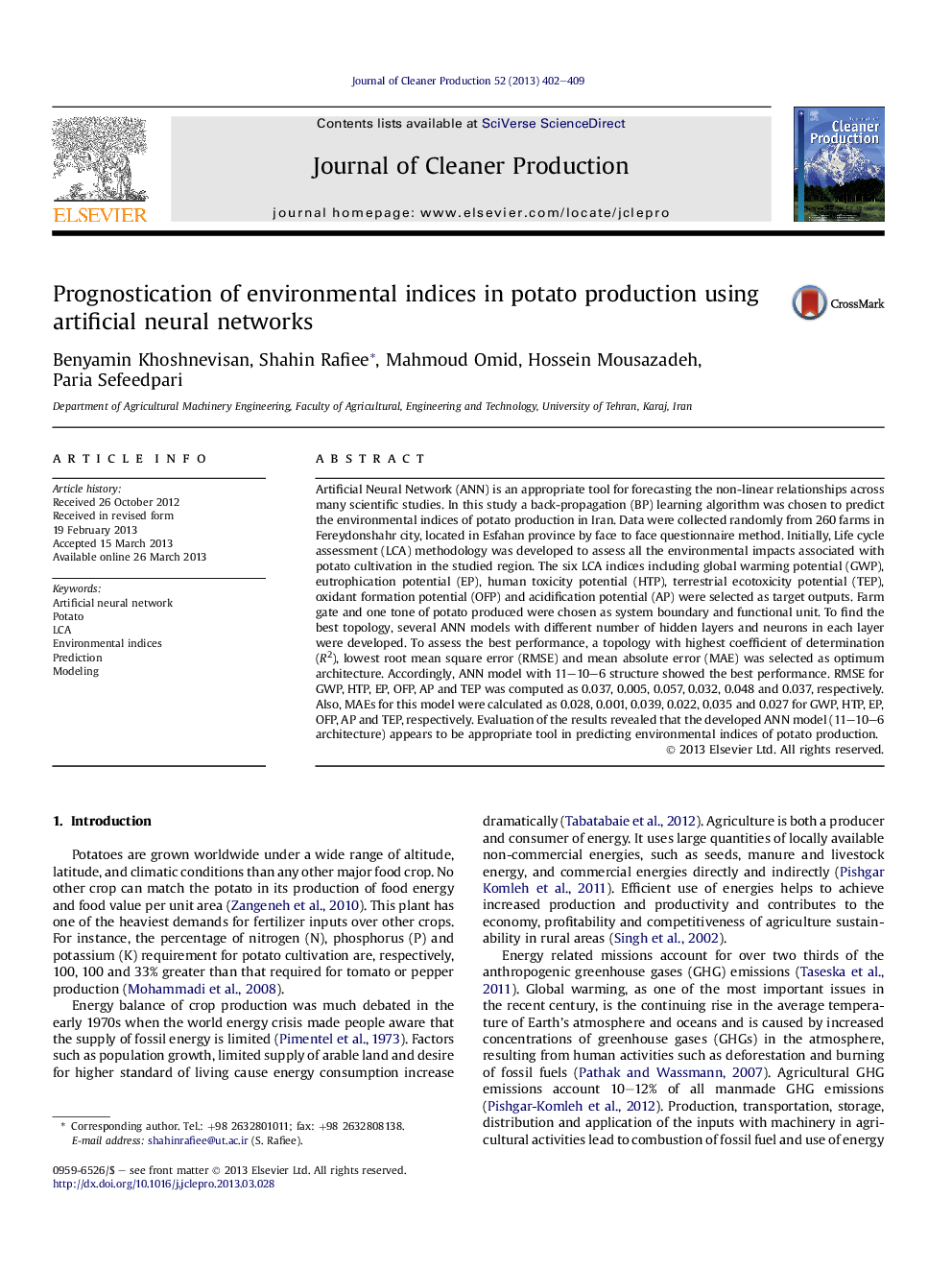| کد مقاله | کد نشریه | سال انتشار | مقاله انگلیسی | نسخه تمام متن |
|---|---|---|---|---|
| 1745259 | 1522194 | 2013 | 8 صفحه PDF | دانلود رایگان |

• We modeled field emissions of Iran potato production using artificial neural networks.
• Several models with different hidden layer and neurons were developed.
• ANN model with 11–10–6 structure showed the best performance.
Artificial Neural Network (ANN) is an appropriate tool for forecasting the non-linear relationships across many scientific studies. In this study a back-propagation (BP) learning algorithm was chosen to predict the environmental indices of potato production in Iran. Data were collected randomly from 260 farms in Fereydonshahr city, located in Esfahan province by face to face questionnaire method. Initially, Life cycle assessment (LCA) methodology was developed to assess all the environmental impacts associated with potato cultivation in the studied region. The six LCA indices including global warming potential (GWP), eutrophication potential (EP), human toxicity potential (HTP), terrestrial ecotoxicity potential (TEP), oxidant formation potential (OFP) and acidification potential (AP) were selected as target outputs. Farm gate and one tone of potato produced were chosen as system boundary and functional unit. To find the best topology, several ANN models with different number of hidden layers and neurons in each layer were developed. To assess the best performance, a topology with highest coefficient of determination (R2), lowest root mean square error (RMSE) and mean absolute error (MAE) was selected as optimum architecture. Accordingly, ANN model with 11–10–6 structure showed the best performance. RMSE for GWP, HTP, EP, OFP, AP and TEP was computed as 0.037, 0.005, 0.057, 0.032, 0.048 and 0.037, respectively. Also, MAEs for this model were calculated as 0.028, 0.001, 0.039, 0.022, 0.035 and 0.027 for GWP, HTP, EP, OFP, AP and TEP, respectively. Evaluation of the results revealed that the developed ANN model (11–10–6 architecture) appears to be appropriate tool in predicting environmental indices of potato production.
Journal: Journal of Cleaner Production - Volume 52, 1 August 2013, Pages 402–409